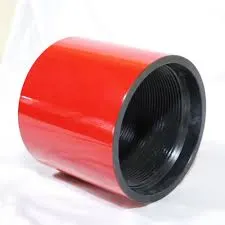- Afrikaans
- Albanian
- Amharic
- Arabic
- Armenian
- Azerbaijani
- Basque
- Belarusian
- Bengali
- Bosnian
- Bulgarian
- Catalan
- Cebuano
- Corsican
- Croatian
- Czech
- Danish
- Dutch
- English
- Esperanto
- Estonian
- Finnish
- French
- Frisian
- Galician
- Georgian
- German
- Greek
- Gujarati
- Haitian Creole
- hausa
- hawaiian
- Hebrew
- Hindi
- Miao
- Hungarian
- Icelandic
- igbo
- Indonesian
- irish
- Italian
- Japanese
- Javanese
- Kannada
- kazakh
- Khmer
- Rwandese
- Korean
- Kurdish
- Kyrgyz
- Lao
- Latin
- Latvian
- Lithuanian
- Luxembourgish
- Macedonian
- Malgashi
- Malay
- Malayalam
- Maltese
- Maori
- Marathi
- Mongolian
- Myanmar
- Nepali
- Norwegian
- Norwegian
- Occitan
- Pashto
- Persian
- Polish
- Portuguese
- Punjabi
- Romanian
- Russian
- Samoan
- Scottish Gaelic
- Serbian
- Sesotho
- Shona
- Sindhi
- Sinhala
- Slovak
- Slovenian
- Somali
- Spanish
- Sundanese
- Swahili
- Swedish
- Tagalog
- Tajik
- Tamil
- Tatar
- Telugu
- Thai
- Turkish
- Turkmen
- Ukrainian
- Urdu
- Uighur
- Uzbek
- Vietnamese
- Welsh
- Bantu
- Yiddish
- Yoruba
- Zulu
API 5CT Tubing Coupling | High-Quality Oil and Gas Couplings
Understanding API 5CT Tubing Couplings Essential Components in Oil and Gas Operations
In the oil and gas industry, efficient extraction and transportation of hydrocarbons are paramount. One crucial element in this process is the tubing system, which includes various components, among which API 5CT tubing couplings play a significant role. API 5CT is a specification developed by the American Petroleum Institute (API) that outlines the requirements for casing and tubing used in the drilling process. Tubing couplings, specifically, are essential for connecting lengths of pipe, ensuring a complete, leak-proof system.
What are API 5CT Tubing Couplings?
API 5CT tubing couplings are designed to join sections of tubing or casing to maintain the integrity of the tubular structure under high-pressure conditions. These couplings are typically made from carbon steel and are manufactured to withstand the harsh environments commonly found in oil and gas extraction. The specification not only dictates the material properties but also stresses the importance of mechanical properties, supplementary requirements, and quality control standards to ensure reliability and safety.
Types of Couplings
There are different types of tubing couplings that fall under the API 5CT specification. The most common types include
1. Regular Couplings These are standard couplings that connect two lengths of tubing. They ensure a secure fit and maintain the structural integrity of the assembly.
api 5ct tubing coupling

2. Heavy Wall Couplings Designed for higher pressure applications, heavy wall couplings have a thicker wall to provide enhanced strength and resistance to collapse.
3. Couplings with Special Threads Some applications require specific thread types for additional sealing capabilities; these couplings cater to those needs by employing unique thread designs.
Importance in Oil and Gas Operations
The selection of the right coupling is critical in oil and gas operations. Proper coupling ensures not only the structural integrity of the tubing string but also the efficiency of the extraction process. A failure at any coupling point can lead to significant operational disruptions and safety hazards, such as leaks or blowouts, which can be costly and dangerous.
Moreover, with the ongoing advancements in drilling technologies—such as horizontal and deep-water drilling—the demand for more robust and versatile coupling designs has increased. API 5CT couplings, with their standardized specifications, provide operators with the assurance that the products they use meet industry standards for performance and reliability.
Conclusion
In conclusion, API 5CT tubing couplings are integral to the success of oil and gas operations. Their design, material properties, and adherence to industry standards are essential for ensuring a safe and efficient drilling process. As the industry continues to evolve, the importance of high-quality coupling solutions remains, emphasizing the need for ongoing innovation and adherence to specifications like API 5CT. The right coupling can make a significant difference in the operational effectiveness of any oil and gas project, proving that even small components play a substantial role in the larger picture of hydrocarbon extraction.
-
Tubing Pup Joints: Essential Components for Oil and Gas OperationsNewsJul.10,2025
-
Pup Joints: Essential Components for Reliable Drilling OperationsNewsJul.10,2025
-
Pipe Couplings: Connecting Your World EfficientlyNewsJul.10,2025
-
Mastering Oilfield Operations with Quality Tubing and CasingNewsJul.10,2025
-
High-Quality Casing Couplings for Every NeedNewsJul.10,2025
-
Boost Your Drilling Efficiency with Premium Crossover Tools & Seating NipplesNewsJul.10,2025







